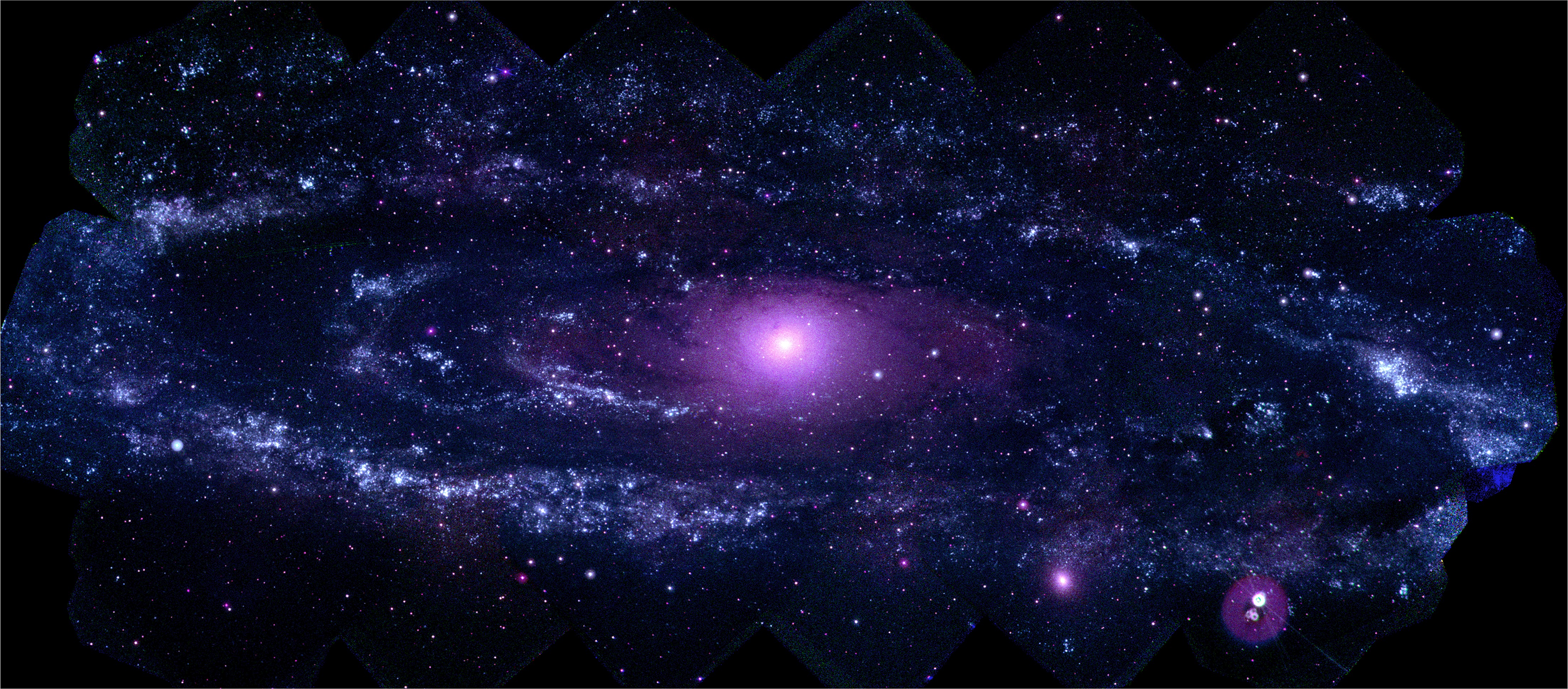The Andromeda Galaxy
The famous Andromeda Galaxy, also known as M31, takes its name from its host constellation. Located 2.5 million light-years away, this vast starry spiral is the closest galaxy similar to our own. Between May 25 and July 26, 2008, NASA’s Swift satellite acquired 330 images of M31 in ultraviolet light. The images reveal dense clusters of hot, young stars, especially plentiful in an enormous ring about 150,000 light-years across. As in our own galaxy, M31's disk and spiral arms contain most of the gas and dust needed to produce new generations of stars. Viewing the galaxy in ultraviolet light allows scientists to study M31's star-formation processes in greater detail than ever before. Watch the video for a tour of M31.

Take a tour of the Milky Way’s giant neighbor.
NASA scientist Stefan Immler unveils more of M31's ultraviolet features in this video.

This ultraviolet mosaic of M31 merges 330 individual images taken by Swift.

The same region of M31 captured in visible light by a ground-based telescope. Both images are about 200,000 light-years wide.

The Swift mosaic is the most detailed ultraviolet view of M31 ever recorded.
For More Information
See NASA.gov
Credits
Please give credit for this item to:
NASA's Goddard Space Flight Center
M31 ultraviolet image courtesy of NASA/GSFC/Swift/Stefan Immler and UMCP/Erin Grand
M31 optical image courtesy of NSF/AURA/NOAO/REU program/B. Schoening and V. Harvey
-
Animator
- Stefanie Misztal (UMBC)
-
Narrator
- Stefan Immler (UMCP)
-
Producer
- Stefanie Misztal (UMBC)
-
Scientist
- Stefan Immler (UMCP)
-
Writer
- Francis Reddy (Syneren Technologies)
Release date
This page was originally published on Thursday, October 16, 2014.
This page was last updated on Wednesday, May 3, 2023 at 1:50 PM EDT.
